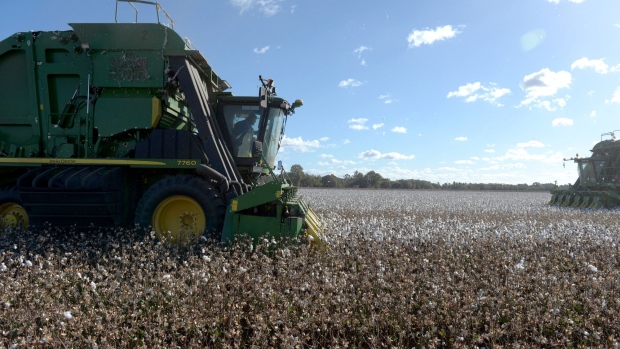Trump trade bailout overpaid farmers, favoured cotton: Study
, Bloomberg News

The Trump administration’s US$28 billion trade bailout largely overpaid farmers for their losses, with southern cotton farmers receiving the most outsized gains, according to researchers at Kansas State University.
The payout to cotton farmers in the bailout’s second round was 33 times the estimated financial impact of tariff disputes with China and other nations, according to the study, published this week in an academic journal. The U.S. Department of Agriculture didn’t immediately respond to a request for comment on the findings.
The study is sure to inflame long-running criticism of the bailout and the way funds were distributed just as the Trump administration moves forward with a US$19 billion coronavirus farm rescue package. The USDA hasn’t yet disclosed how the virus rescue payments will be calculated, but officials have said an announcement is imminent.
Farmers and rural communities are a crucial part of Donald Trump’s political base as he seeks re-election. The president has assiduously courted farmers, lavishing them with praise and boasting of the aid he has given them. Over the past year, he has mentioned farmers on average three times a week in his Twitter posts.
The study found wide differences by commodity in the relationship between trade losses and bailout payments. In the second round, when payments were larger, compensation was 1.4 times trade losses for corn, 2.4 times for soybeans, 7.1 times for wheat and 7.3 times for sorghum, according to the authors, Joseph Janzen and Nathan Hendricks, both economists at Kansas State.
The authors also compared payments to the rent farmers pay for property -- which reflect land’s productivity -- and found southern farms benefiting disproportionately. In the second round, rescue payments in the south were larger than rental rates, while in the Midwestern Corn Belt they ran about 30 per cent of rental rates.
The study “points to the difficulties of trying to target a massive plan like this to where the losses are being incurred,” said Joseph Glauber, former USDA chief economist, who wasn’t involved in the study or the trade bailout.
Janzen said the discrepancies in aid payouts stemmed from the method the USDA used to predict trade losses. The agency based payment solely on projected sales losses in China and other nations engaged in tariff disputes without accounting for the inevitable rise in sales elsewhere as global trade flows adjusted.
That method under-compensated corn growers in the first round, since the crop was indirectly impacted. Many farmers rotate between corn and soybeans, and corn supplies rose as soybean prices dropped. Cotton growers were overcompensated because they have many other overseas customers that easily absorbed sales lost in China.
In the first round, covering the 2018 crop year, payouts for corn covered only about a tenth of losses while payouts to cotton covered 7.4 times losses, the authors found.
The USDA shifted to a more generous payout method in the second round. Instead of benchmarking losses against the prior year’s sales, the agency used the best one-year sales for each commodity over the prior decade. That raised the payment for corn. But it also skewed payments even more toward cotton, quadrupling payouts for the commodity because cotton exports to China in 2011 were much larger than in 2017.
In the second round, the USDA paid farmers in each county a per-acre rate based on the mix of crops previously grown in the county.
The study examined five major commodities that account for the vast majority of crops produced in the U.S. It was published in Applied Economic Perspectives & Policy, the journal of the Agricultural & Applied Economics Association.
No comments:
Post a Comment